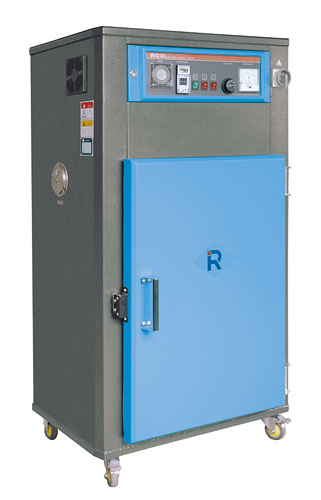 Mechanical drying: drying with mechanical dewatering called, someone has a different opinion. But
exclude mechanical object in the water to exclude defined, mechanical
drying is quickly removed by the moisture contained in the object
mechanical action. For example: a drum dryer is a centrifugal effect to exclude certain objects most of the moisture. Another example: the press machine can also be used for drying, then, shall be placed in two dry grooved platen. When pressurized, water is discharged from the trench. Also useful roll press, to be dry or from between two press rolls, or
from one of the press through the metal mesh belt between the rollers
and a belt of fine mesh, water is discharged from the mesh.
Mechanical drying: drying with mechanical dewatering called, someone has a different opinion. But
exclude mechanical object in the water to exclude defined, mechanical
drying is quickly removed by the moisture contained in the object
mechanical action. For example: a drum dryer is a centrifugal effect to exclude certain objects most of the moisture. Another example: the press machine can also be used for drying, then, shall be placed in two dry grooved platen. When pressurized, water is discharged from the trench. Also useful roll press, to be dry or from between two press rolls, or
from one of the press through the metal mesh belt between the rollers
and a belt of fine mesh, water is discharged from the mesh.Chemical drying: Many chemicals have a dehydrating effect, can be used to as a dehydrating agent for removing the water object here that the chemical drying limited to direct chemical dehydration, the surface does not include the treatment of dry matter in ambient air dehumidification indirect chemical drying, because indirect chemical drying drying method is a combination of thermal drying. Chemicals used in chemical dry calcium chloride, lithium chloride, sodium chloride, sulfur chloride, calcium nitrate, sodium nitrate and the like.
Thermal drying: Thermal drying is to use thermal energy becomes gaseous liquid, and then by air (ie, dried matter) will produce water vapor excluded. His major works by molecular vibrations to destroy the chemical and electrostatic bonding between the liquid and the object so that the object dried, during thermal drying, must be dry so that the molecular structure does not change. Thermal transfer methods are: thermal, i.e. an object via a conductor (such as metal) and heat exposure; radiation, such as microwave, infrared rays and the like; convection, i.e. transfer heat energy required by the drying air.
Almost all drying methods to be used for air as the water discharge from the object in the vehicle, will be placed in dry temperature and relative humidity in certain environments, this thing that is changed according to certain rules, these rules and the object of principal and interest and its surroundings (humid air) physical - chemically related. Such as water vapor and liquid water within a body of the sport, as well as the transfer of surface moisture evaporation energy and a series of phenomena can be explained by the theory of mass and heat transfer, in order to study the drying process, first by means of humid air diagrams for wet air The relevant characteristics.
![<?echo $_SERVER['SERVER_NAME'];?>](/template/twentyseventeen/skin/images/header.jpg)